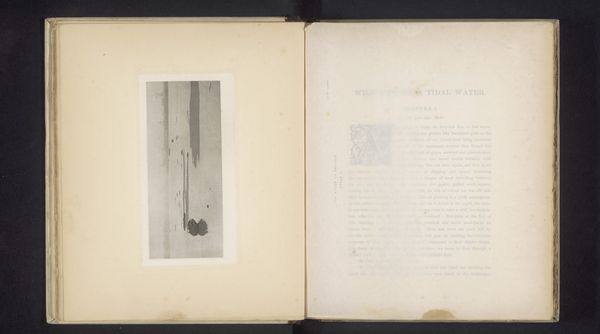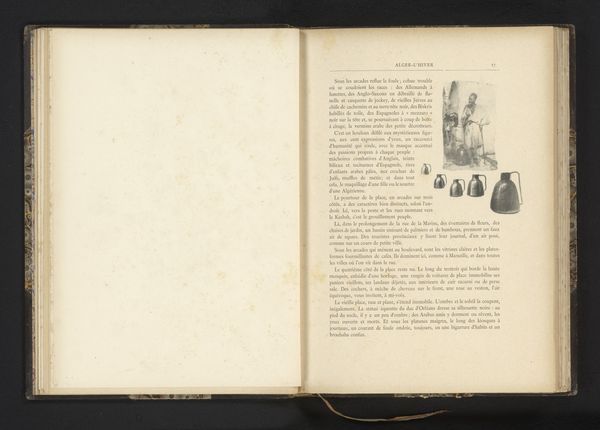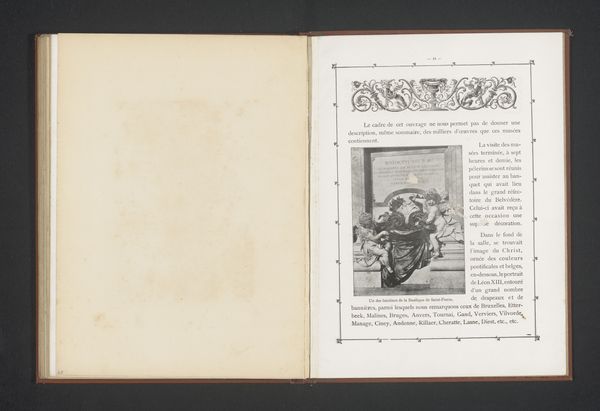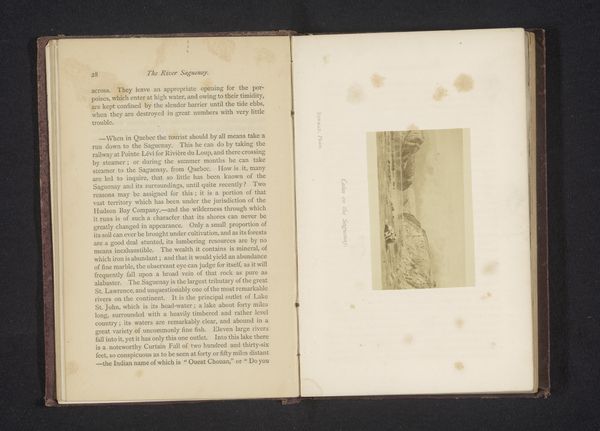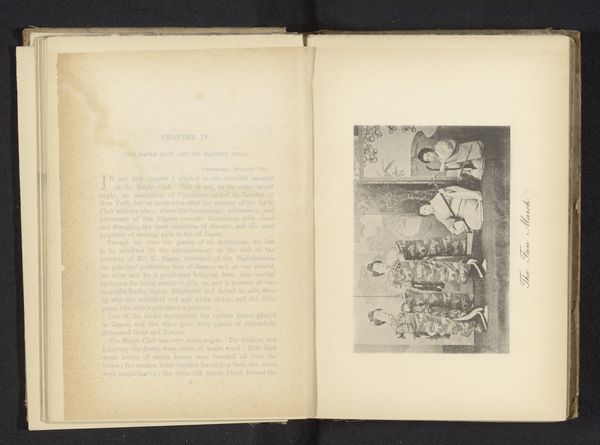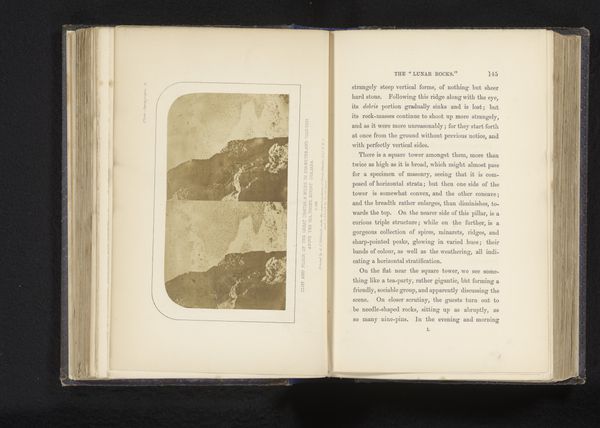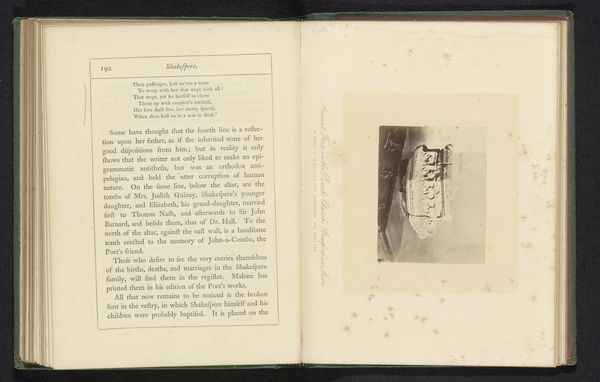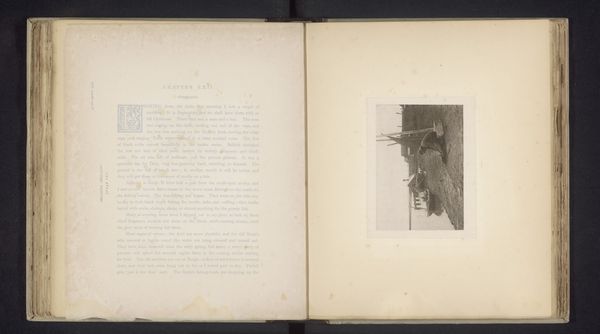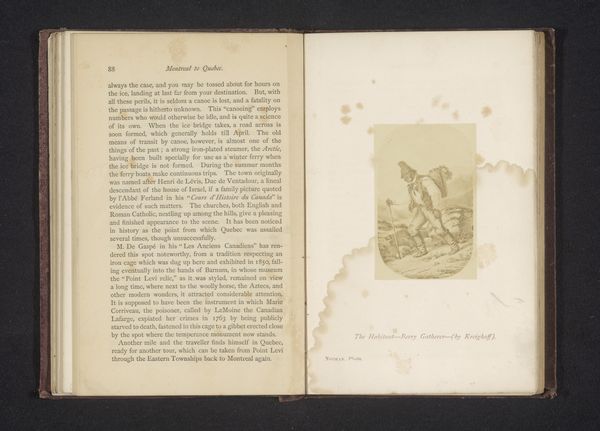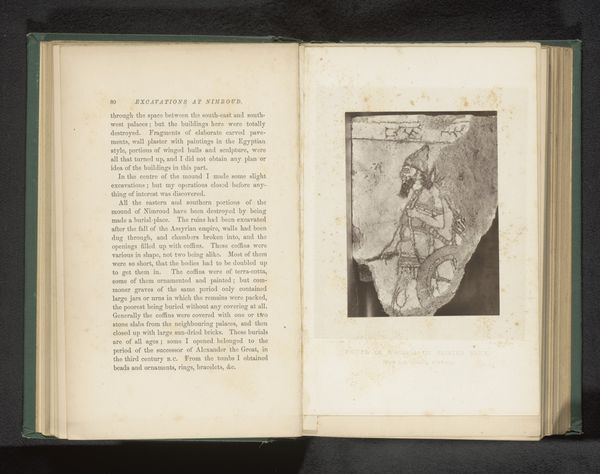
Dimensions: height 65 mm, width 129 mm
Copyright: Rijks Museum: Open Domain
Curator: This artwork is listed as "Fotoreproductie van een tekening van een paard door John Carter," or a "Photographic Reproduction of a Horse Drawing by John Carter." The piece is dated before 1868 and executed using a combination of graphite, ink, pencil, print, and engraving on paper. Editor: It strikes me immediately as something copied, almost an illustration from a study or perhaps some equestrian manual. I can sense a skilled hand, but the way it's presented within what looks like a printed volume undermines its power. What were the materials used? It looks as if several different materials were utilized, as the image displays contrasting styles, for instance in rendering the armor as opposed to the lines around the horse. Curator: Yes, there are a few conflicting elements within this drawing that suggest the hands of multiple artists may have been present to make a faithful depiction. I would argue the imagery holds deep significance, even beyond the surface. Horses throughout history symbolize power, freedom, and nobility, however the armor on the subject in the work obscures that traditional view. Editor: Precisely. I think we must dig a little deeper to assess it properly as an artistic production. Was it truly John Carter’s own hand who crafted this? Or a reproduction of it made later with lesser value? What level of access to materials might Carter had and how readily were these tools of creative production availale to the engraver? These questions remain crucial to our understanding of the artwork. Curator: That is certainly true, but given Carter's talent at drawing as noted by George Richmond in a letter around Carter’s death on June 2d, 1850, it becomes quite telling about how he may have been held in high regard with admiration. Despite the means of production we may uncover through further study, we are offered here the opportunity to consider both beauty and loss when approaching such figures. Editor: Interesting, I appreciate the contextual and material layers we can continue peeling back. I agree it would benefit from some closer looking as its value seems contingent upon the specific circumstances surrounding production and display in its time.
Comments
No comments
Be the first to comment and join the conversation on the ultimate creative platform.
